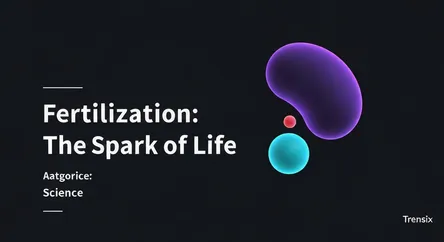Science
Fertilization: The Spark of Life

Discover the biological process where male and female gametes fuse to form a zygote, initiating the development of a new organism.
What is it?
Fertilization is the fundamental biological process where two gametes, a male gamete (sperm) and a female gamete (egg or ovum), fuse together. This fusion creates a single cell called a zygote, which contains the combined genetic material from both parents. This event marks the very beginning of a new organism's development in sexual reproduction. It's a universal process found across the tree of life, from plants and fungi to animals. The primary purpose of fertilization is to combine paternal and maternal genes, introducing genetic variation, and to initiate the cell divisions that will form a complete individual.
Why is it trending?
The topic of fertilization remains prominent due to incredible advancements in reproductive technology. Techniques like In-Vitro Fertilization (IVF) have become more common, helping countless individuals build families. Furthermore, ongoing research into the molecular signals that guide sperm to egg and the intricacies of their fusion continues to reveal new insights. Public interest is also fueled by discussions on fertility preservation, genetic screening of embryos, and the ethical considerations surrounding these powerful technologies that are reshaping modern family planning and biology.
How does it affect people?
Fertilization is central to human existence, directly impacting family planning and reproductive health. For many, it's the start of a deeply personal journey into parenthood. However, challenges with natural fertilization lead millions to explore assisted reproductive technologies, an often emotional and medically complex process. Beyond human reproduction, understanding fertilization is crucial for agriculture to improve crop yields and livestock breeding. It is also vital in conservation biology, where assisted fertilization techniques are used in breeding programs to help save endangered species from extinction, preserving global biodiversity.